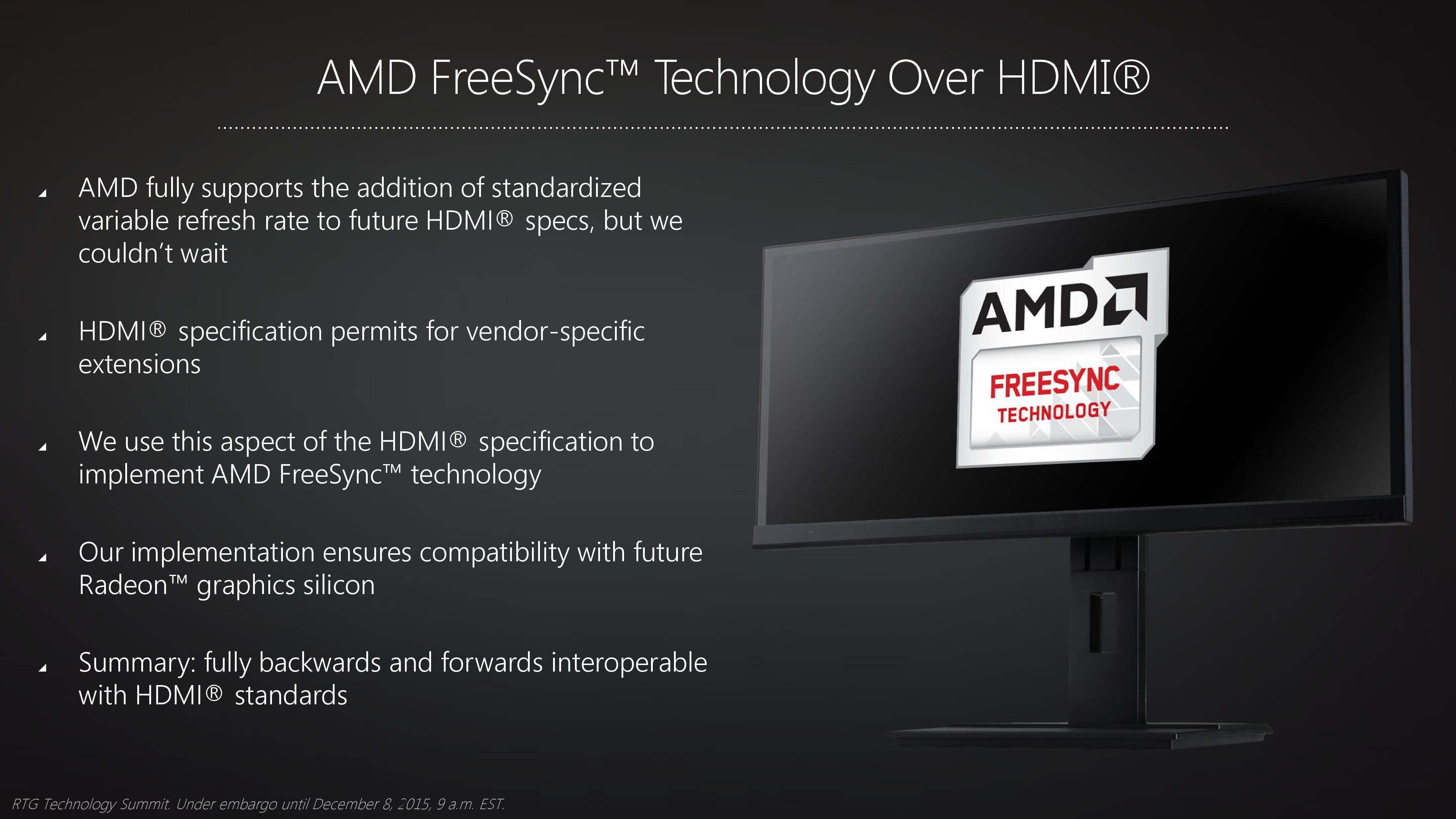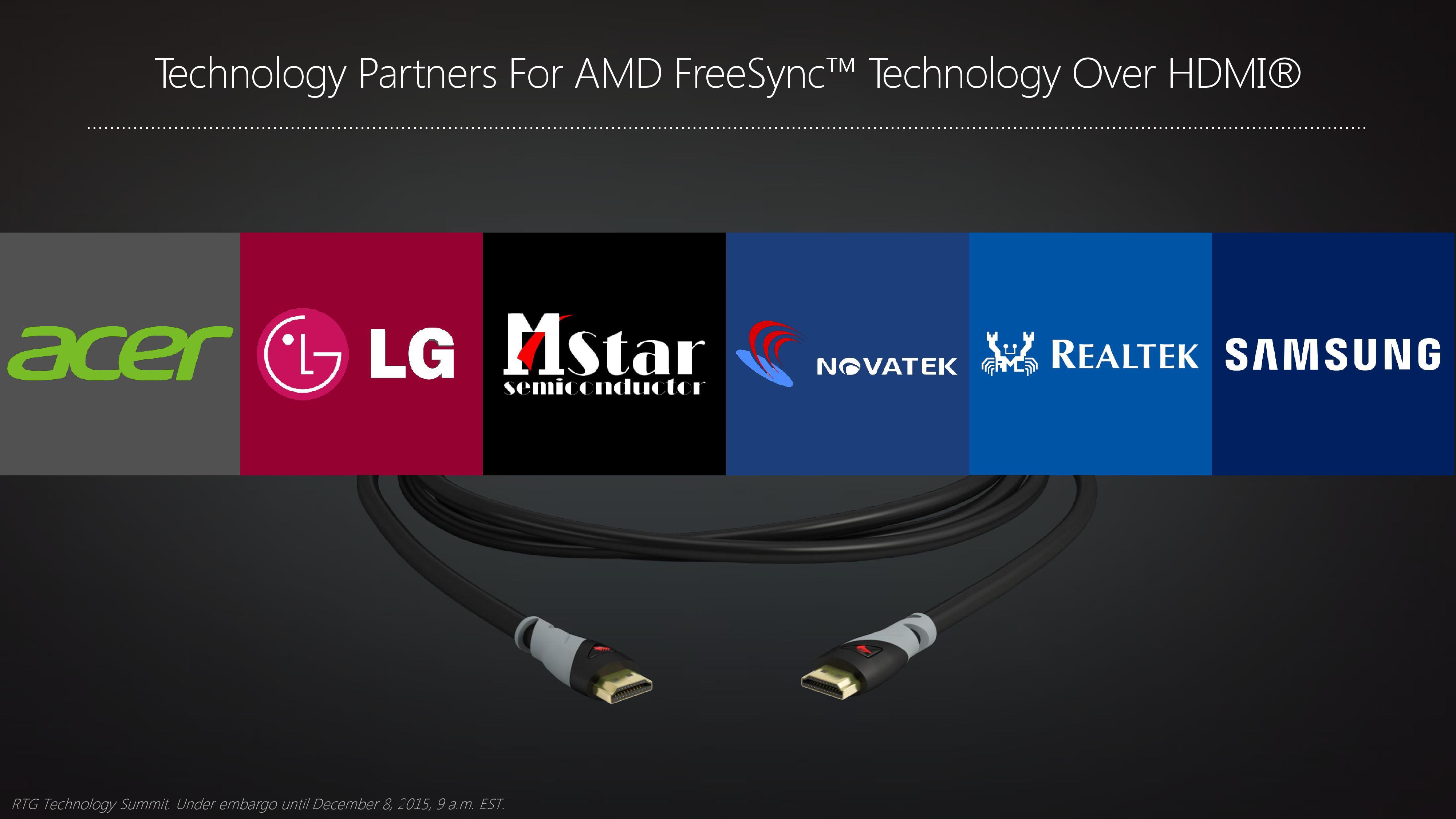Adaptive sync for HDMI is something that AMD made and even if they are offering it to the HDMI Forum is not necessarily something that they are interested in including. There is less benefit for video than there is for games and people are underestimating the effort involved.
It is currently implemented using vendor-specific extensions, which makes it "legal" within the HDMI standard.
There's nothing preventing it from being supported in 2017 TVs.
A number of monitors received Adaptive-Sync support via firmware updates - even really cheap "eBay specials" from companies you've probably never heard of.
If they can manage it, big companies like Sony/Samsung/LG shouldn't have any difficulty supporting it.
Look at the companies who are already on-board: LG and Samsung.
Samsung have already released monitors supporting this. I'm not sure if LG have released any yet, though they do have regular Adaptive-Sync displays.
There's no reason they shouldn't support this on their TVs.
Especially when it comes to audio sync which HDMI needs to deal with but DP does not.
DisplayPort is not a video-only interface.
Arbitrary refresh technology right now also does not support truly arbitrary refresh rates with minimum being upwards of 40 usually with frames being repeated to maintain the screen refresh. Video content does not vary its framerate so they can match it if they wished but it's a massive pain to implement something like this.
Most displays start at 30Hz now rather than 40Hz, but either is fine.
So long as your maximum refresh rate is at least 22.5x your minimum, you can repeat frames when the framerate drops below your minimum refresh rate.
So if your display doesn't support 24Hz you repeat each frame and display at 48Hz instead.
OLEDs shouldn't have the minimum refresh rate limitations that LCDs do, so they could theoretically handle everything from 1120Hz, which the Adaptive-Sync spec supports.
The problem with LCDs is that the image fades the longer you try to hold it without updating the panel.
The lack of variable refresh rate support is the reason why there is no home version of the HFR Hobbit films.
There is no widespread support for 48Hz and it would probably require new players and displays - or at least firmware updates for both.
If we had variable refresh rate support from the start, you wouldn't have to think about it.
They'd just deliver a 48 FPS video and it would just work.
If "HFR" support just means that TVs now support 24/50/60/100/120Hz inputs instead of 24/50/60Hz, that will be really disappointing.
Now is the ideal time to support variable refresh rates - whether that's Adaptive-Sync-over-HDMI or some other standard. Support 40-120Hz on LCDs and 1-120Hz on OLEDs.
If a director wants to release a film at 72 or 96 FPS, or any other framerate they desire, they should be able to.
It's really short-sighted of them if HFR support just means two more fixed refresh rates being added, instead of moving to variable refresh rates.
And while video currently gets released at fixed frame rates, VFR encoding could help save bandwidth for streaming services, allowing them to deliver higher quality.


